Repeaters, Hubs, Bridges and Switches
Networks have the trend to grow, requiring often the need for repeaters ( on
10base2 - Thin-Ethernet ) or multiple hubs (on 10/100baseT Twisted-Pair), where it is required to follow the rules on maximum number of Repeaters/Hubs (
Large Networks: 5-4-3 Rule ).
10base2 - Thin Ethernet (Coax):
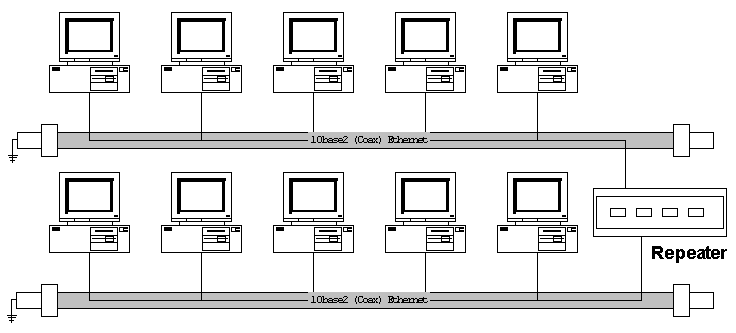
10baseT - Twisted Pair (TP/UTP):
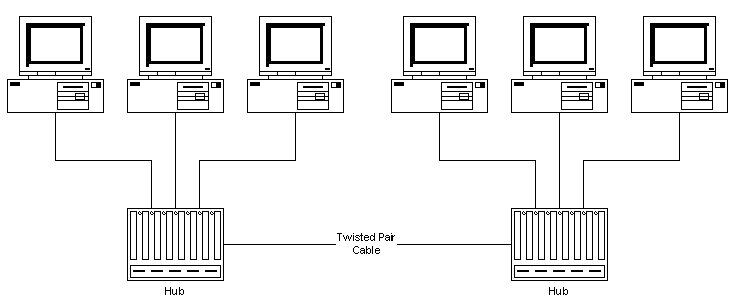
But these 'cable-extension' method have all a serious limitation
concerning the maximum throughput of the network:
(explanation is visually via the animated GIF below)
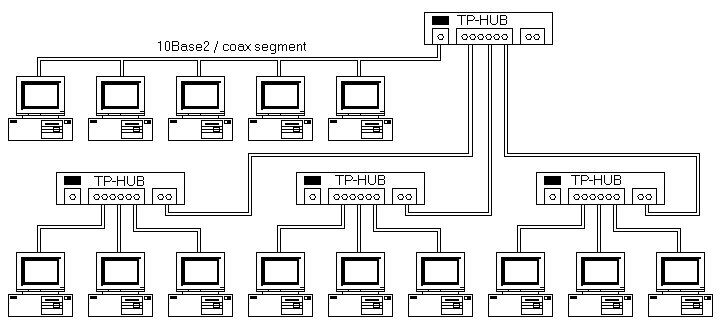
Hubs and repeaters are fairly simple, 'non-intelligent' devices:
whatever comes in on one port, gets amplified and send out to ALL
other ports, so any network transmission 'fills up/flows into' ALL cable-segments
of the network, so only ONE network connection can be active at a time on the complete
network !
When multiple system try to communicate at the same time:
(explanation is visually via the animated GIF below)
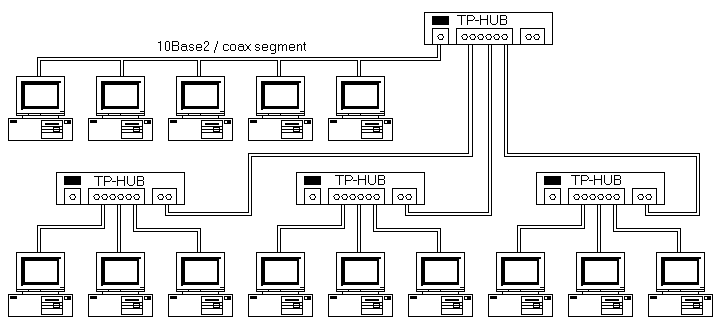
then the signals 'collide'/corrupt each other, making them invalid, time has been wasted
and the system will try after a random delay again to transmit, resulting in network
slowdown.
There is a possibility to optimize such network configurations:
Bridge:
In the early days of networking, such a 'intelligent' device called 'Bridge'
viewed at the data inside the transmissions, to find out based on the Network-card
addresses (MAC), whether it is necessary to transmit the information to a different
segment or not. Such Bridges has only 2 connectors, allowing to split large networks into
2 smaller sub-networks.
Switch:
Switches are also 'intelligent', but are able to handle more than 2 ports and are
able to handle more than 2
communications at the same time:
When a transmission comes in on one port, the switch looks at the MAC addresses to
determine, onto which port to send it out:
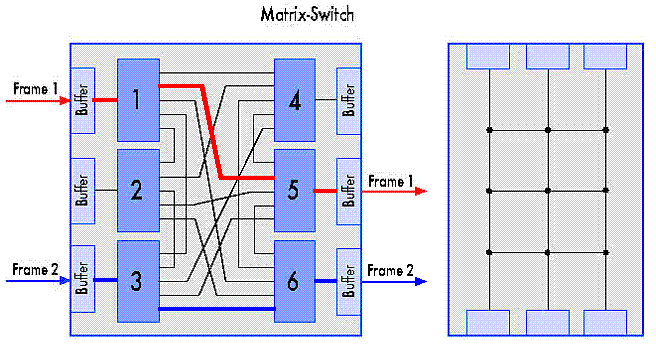
Now a large network can handle MULTIPLE transmissions at the same time:
(explanation is visually via the animated GIF below)
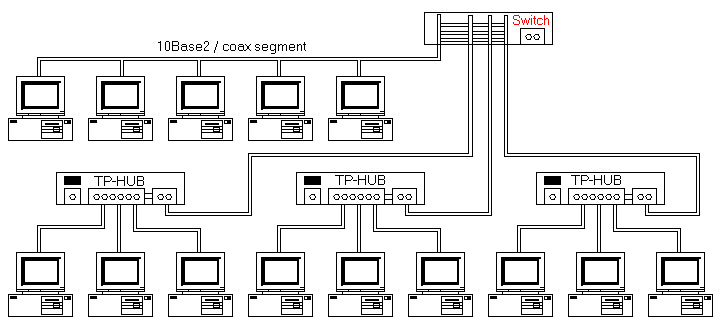
But to be able to get this additional Through-put, careful planing of
the network layout is required, looking on the flow of the network traffic:
Singe Server configuration:

Swapping a hub to a Switch in such a configuration will not optimize the network, since
the connection from the TP-HUB to the server is still the bottle-neck.
Multi Server configuration:
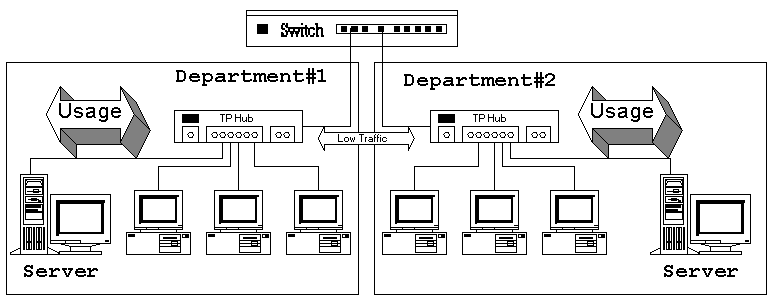
If most the network traffic is within the workgroups (departments,..) and only few network
traffic is between the workgroups, then a Switch is the solution to optimize network
utilization.
Optimize 10 Mbit Network using a 100 MBit Server connection:
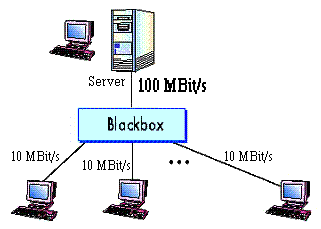
Blackbox = Hub
if the 'Blackbox' is a hub (even if it is a switching 10/100 Mbit hub), the
throughput of the complete network is limited at 10 Mbit (since ALL traffic is transmitted by a hub to ALL connected segments)
Blackbox = Switch
if the 'Blackbox' is a Switch, then each connected system
can communicate at full speed of the 10 Mbit with the server
( because the switch does NOT pass it through to the
other 10 MBit segments and the connection of 100 MBit with the server can handle the
higher throughput)